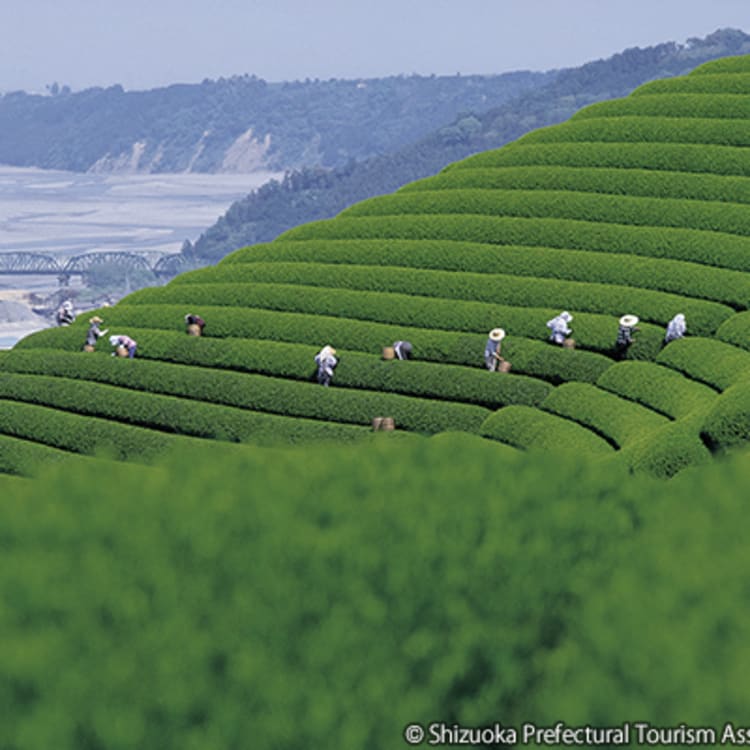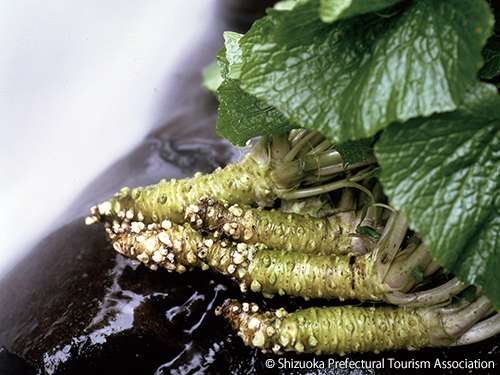
GUIDE Tea leaf picking in Makinohara, Shizuoka by JNTO on 12 February 2019
Shizuoka Prefecture produces almost half of Japan’s green tea, and the most renowned tea-producing region is Makinohara which accounts for 20% of Japan’s production. Tea has been grown in the area by family-run plantations for over 800 years. Tea leaves produced in Shizuoka Prefecture are characterised by a good balance of umami, aroma, and astringency. Makinohara tea leaves in particular, are unique because they are steamed for extended hours – in a process called Fukamushi – to develop a bright colour and mild flavour.
The tea factory of Grinpia Makinohara is a popular place for visitors to learn about the manufacturing of sencha (medium grade tea) – from the harvest, to the process, and packaging of the tea. Grinpia also has its own vast tea plantation that stretches out as far as the eye can see.
While entry to Grinpia and the factory is free, there are a few activities you can participate in for a small fee, including a tea ceremony where traditional sweets are served (510 yen). You can also pluck your own tea leaves from the plantation if you’re visiting between late April and early October (800 yen); there is also an option to rent a traditional costume (500 yen) for picking tea. The best – and most crowded – harvesting season is in the beginning of May during the Golden Week holidays in Japan, when most of the young shoots appear.
For the harvesting, you will be given a wicker basket and a traditional happi coat to put on before you are led down a plot of dark-green, shoulder-high bushes where you can pick the leaves for about 30 minutes. Experts recommend picking only the young, small leaves at the top, and only plucking three leaves per shoot. A tea bush only reaches maturity after four years, when it gets to at least shin level.
Picking tea isn’t the only experience in Makinohara – you can also try temomi, which is a traditional method of drying tea leaves by hand by rolling the leaves over a heated surface. While machines are normally used in this process these days, you can try your hand at this traditional craft at a number of tea factories around Makinohara, where you can make your own blend to take home. The process takes about an hour.
What is there to eat in Shizuoka?
You can taste specialty foods made with green tea at the Grinpia Makinohara’s restaurant Maruobara, which is housed in a historic 140-year-old farmhouse belonging to farmers who first cultivated the land here. Not to be missed are the cha-soba (green tea infused buckwheat noodles), tea leaf tempura, green tea ice cream, as well as fresh tea.
Thanks to its temperate climate and mountainous terrain, Shizuoka also produces almost half of Japan’s wasabi root. Apart from adding freshly-grated wasabi to your sushi, you can also try wasabi ice cream, or even wasabi leaf tempura.

Shizuoka is also famous for its seafood – especially for sakuraebi (cherry shrimp) that can be prepared in many ways, including as sushi or kaki-age, which is deep-fried in tempura batter. Another popular seafood is freshwater eel (unagi), which is particularly famous in the coastal town Hamamatsu. You can dine on unaju (eel rice bowl), or take home an unagi pie that has powdered eel kneaded into a buttery pastry.

Hamamatsu is also known for its gyoza as there are over 80 gyoza shops around town. Most of the gyoza are stuffed with cabbage and pork, and typically served with a side of bean sprouts.
How to get to Grinpia Makinohara?
Makinohara is located in the central region of Shizuoka Prefecture. The easiest way to get to Grinpia Makinohara is to get off at Kanaya Station or Kikugawa Station, both along the Tokaido Honsen Line from JR Shizuoka Station. From either station, it’s a 15-20-minute taxi ride.
Date: Open year-round, closed on New Year
Time: 10:00 to 17:00; Tea picking experience from late April to early October
Entrance fee: Entry and factory tours free of charge; Tea picking experience 820 yen (adult), 720 yen (children 6-12 years old); Tea costume rental 500 yen (reservation required); Sencha tea ceremony (with sweets) 510 yen (adults), 410 yen (children 6-12 years old)
























































